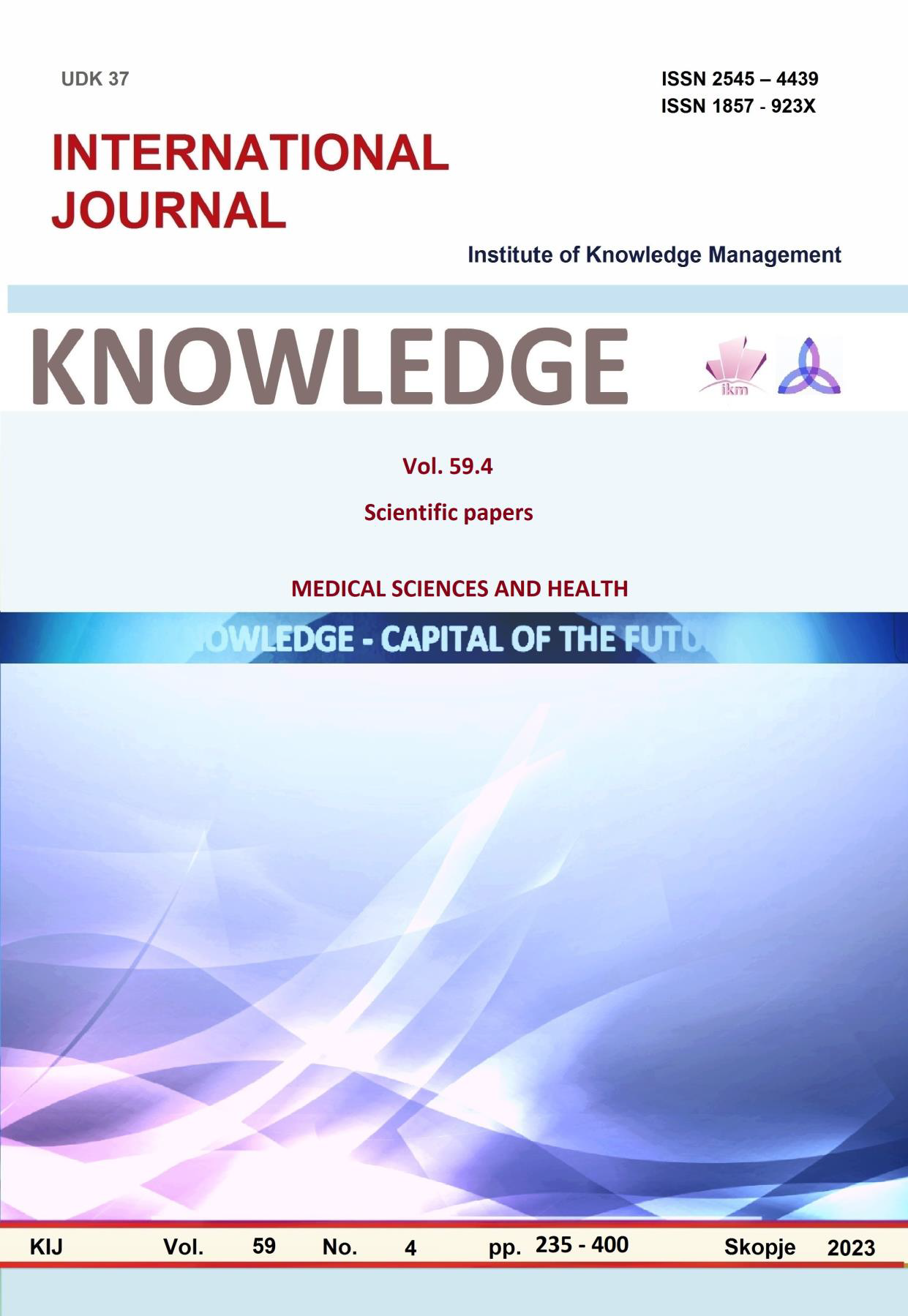HANDS HYGIENE TRAINING AND ADHERANCE OF HEALTHCARE PROFESSIONALS FOR CONTROL HEALTHCARE-ASSOCIATED INFECTIONS
Keywords:
hand hygiene, training, compliance, adherence, health professionalsAbstract
Healthcare-associated infections (HAIs) present a widespread challenge for healthcare facilities globally. To effectively prevent and control HAIs, it is crucial for all healthcare professionals to strictly adhere to standard hand hygiene protocols. Extensive examination of pertinent scientific literature confirms that repeated training in hand hygiene is indispensable to ensure compliance among healthcare professionals. Moreover, implementing reminders for hand hygiene, such as prominently displayed posters and the strategic positioning of gloves and hand sanitizers at workstations, has proven effective in HAI prevention. Following training, continuous monitoring of hand hygiene compliance becomes imperative. In light of the overarching objective of healthcare facilities and professionals to deliver high-quality healthcare, adopting a team-based approach to prevent HAIs emerges as the most effective strategy for promoting hand hygiene compliance. Healthcare professionals working as a cohesive team should undergo initial and recurrent training, while also engaging in ongoing support, correction, and reminders to emphasize the significance of hand hygiene in their daily routines. This collective effort is poised to significantly improve adherence to hand hygiene practices, thereby leading to a notable reduction in healthcare-associated infections.
References
Arredondo-Provecho, A.B., Horcajo-Díaz, E., Cerrillo-González, I., Morato-Cerro, V.M., Pérez-Ortiz, M., & Rodríguez-Caravaca, G. (2020). Evolución de la adherencia a la higiene de manos en un hospital de la Comunidad de Madrid [Evolution of hand hygiene adherence of health professionals of specialized care]. Rev Esp Salud Publica. 94:e202007075.
Anwar, M.M., & R. (2019).Improvement of hand hygiene compliance among health care workers in intensive care units. J Prev Med Hyg. 60(1):E31-E35.
Baccolini, V., D'Egidio, V., de Soccio, P., Migliara, G., Massimi, A., Alessandri, F., et al. (2019). Effectiveness over time of a multimodal intervention to improve compliance with standard hygiene precautions in an intensive care unit of a large teaching hospital. Antimicrob Resist Infect Control. 8:92.
Engdaw, G.T., Gebrehiwot, M., & Andualem, Z. (2019).Hand hygiene compliance and associated factors among health care providers in Central Gondar zone public primary hospitals, Northwest Ethiopia. Antimicrob Resist Infect Control. 8:190.
Farmani, Z., Kargar, M., Khademian, Z., Paydar, S., & Zare, N. (2019).The effect of training and awareness of subtle control on the frequency of hand hygiene among intensive care unit nurses. BMC Res Notes. 12(1):647.
García-Vázquez, E., Murcia-Payá, J., Allegue, J.M., Canteras, M., & Gómez, J. (2012). Influencia de un programa de intervención múltiple en el cumplimiento de la higiene de manos en una unidad de cuidados intensivos [Influence of a multiple intervention program for hand hygiene compliance in an ICU]. Med Intensiva.36(2):69-76.
Gaube, S., Tsivrikos, D., Dollinger, D., & Lermer, E. (2018).How a smiley protects health: A pilot intervention to improve hand hygiene in hospitals by activating injunctive norms through emoticons. PLoS One. 13(5):e0197465.
Graveto, J.M.G.D.N., Rebola, R.I.F., Fernandes, E.A., & Costa, P.J.D.S. (2018). Hand hygiene: nurses' adherence after training. Rev Bras Enferm. 71(3):1189-1193.
Gould, D.J., Moralejo, D., Drey, N., Chudleigh, J.H., & Taljaard, M. (2017). Interventions to improve hand hygiene compliance in patient care. Cochrane Database Syst Rev. 9(9):CD005186.
Graveto, J.M., Santos, C., Costa, P.S., Fernandes, E., Alarico, S., Osório, N., et al . (2018).Hand hygiene management among nurses: collective health challenges. Rev. Bras. Enferm. 71(1):562-7.
Hoffmann, M., Sendlhofer, G., Pregartner, G., Gombotz ,V., Tax, C., Zierler, R., et al. (2019). Interventions to increase hand hygiene compliance in a tertiary university hospital over a period of 5 years: An iterative process of information, training and feedback. J Clin Nurs. 28(5-6):912-19.
Laskar, A.M., Bhat, P., Pottakkat, B., Narayan, S., Sastry, A.S., & Sneha, R. (2018). A multimodal intervention to improve hand hygiene compliance in a tertiary care center. Am J Infect Control. 46(7):775-780.
Madhura, A., Golhar, S., Chauhan, U., Ughade, S., & Dhakne, S. (2018). Impact of hand hygiene training module among healthcare providers working in neonatal intensive care unit: A before and after trial. Indian J Child Health [Internet]. 5(4):276-9.
Martos-Cabrera, M.B., Mota-Romero, E., Martos-García, R., Gómez-Urquiza, J.L., Suleiman-Martos, N., Albendín-Garcíaet , L., et al. (2019). Hand Hygiene Teaching Strategies among Nursing Staff: A Systematic Review. Int J Environ Res Public Health.16(17):3039.
Müller, S.A., Diallo, A.O.K., Wood, R., Bayo, M., Eckmanns, T., Tounkara, O., Arvand, M., Diallo, M., & Borchert, M. (2020). Implementation of the WHO hand hygiene strategy in Faranah regional hospital, Guinea. Antimicrob Resist Infect Control. 2020;9(1):65.
Ni, L., Wang, Q., Wang, F., Ni, Z., Zhang, S., Zhong, Z., et al. (2020). An interventional implementation project: hand hygiene improvement. Ann Transl Med. 8(18):1149.
Saharman, Y.R., Aoulad Fares, D., El-Atmani, S., Sedono, R., Aditianingsih, D., Karuniawati, A., et al. (2019).A multifaceted hand hygiene improvement program on the intensive care units of the National Referral Hospital of Indonesia in Jakarta. Antimicrob Resist Infect Control. 8:93.
Santosaningsih, D., Erikawati, D., Santoso, S., Noorhamdani, N., Ratridewi, I., Candradikusuma, D., et al. (2017).Intervening with healthcare workers’ hand hygiene compliance, knowledge, and perception in a limited-resource hospital in Indonesia: a randomized controlled trial study. Antimicrob Resist Infect Control. 6:23.
Vaismoradi, M., Tella, S., Logan, P., Khakurel, J., & Vizcaya-Moreno, F. (2020). Nurses' Adherence to Patient Safety Principles: A Systematic Review. Int J Environ Res Public Health. 17(6):2028.





